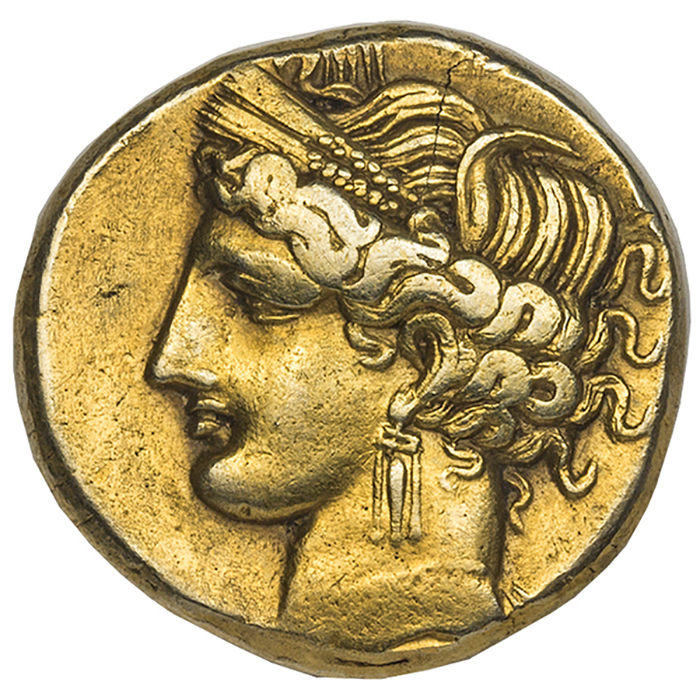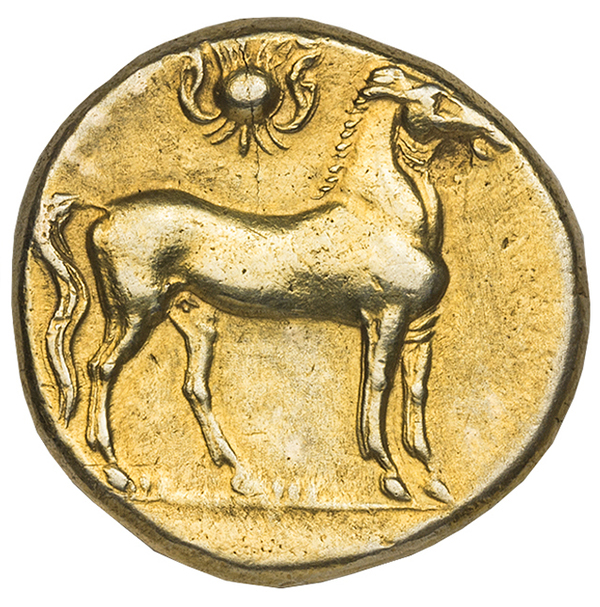
Overview:
Carthage
At its peak, the ancient North African city of Carthage rivaled the Eternal City of Rome for military and economic control of the western Mediterranean Sea.
Today, its ruins are a UNESCO World Heritage Site in the suburbs of the Tunisian capital.
Most people, if they’ve heard of Carthage at all, are familiar with Hannibal and his elephants, who famously crossed the Alps(!) to invade Italy during the Second Punic War (218-201 BCE).
Or they might know about stories of child sacrifice to the god Moloch among the ruling class in times of trouble–though it’s important to remember that almost everything we know about the Carthaginians is based on the writings of their victorious enemies.
According to legend, Queen Dido (also known as Elissa[1]) founded the city in 814 BCE. She was the daughter of the king of Tyre, a Phoenician city on the coast of modern-day Lebanon. The Augustan Age Roman poet and propagandist Virgil, writing over a century after the destruction of Carthage, took some liberties with Dido’s story in his epic poem the Aeneid. Instead of a native chieftain’s relentless pursuit of her hand in marriage, it is the Trojan hero and ancestor of Rome Aeneas who wins her heart, only to abandon her as he sets sail for greatness in Italy. The end result is the same; Dido is said to have built an enormous funeral pyre, at the top of which she committed suicide by falling on a sword.
Only in Virgil’s story, she curses Aeneas with everlasting conflict between Carthage and his descendants. This serves as a mythological explanation for the bitterly fought Punic Wars (punicus being Latin for “Phoenician”), waged between 264 and 146 BCE when Carthage was finally defeated. The city was razed to the ground and the very earth salted by vengeful Romans.

Tanit
Carthage was a Phoenician colony, and as such the Carthaginians were related to the Hebrews and the Canaanites (among others). Culturally they had much in common, including the use of the shekel as the primary unit of money. Likewise, the Carthaginians worshipped a variety of deities from the ancient Middle East.
One in particular was the goddess Tanit.
A Phoenician (Punic) goddess of war, Tanit was also a virgin mother goddess and a fertility symbol. She was the wife/consort of Ba’al Hammon (Moloch), the chief god of Carthage. Queen Dido is sometimes identified with the goddess, as are the Babylonian Ishtar, the Egyptian Neith and the Greek Athena.
Tanit served as the special protector (tutelary) deity of the city of Carthage, which is why her effigy is found on its coinage.
Electrum
Electrum is a naturally-occurring alloy of gold and silver and the metal of choice for the Lydians of Asia Minor (who are generally agreed to have made the first coins in European history). It is harder than pure gold and was therefore a more durable coining material at a time when gold refining was not a widespread technology.
When found in nature, the proportions of the two precious metals are different depending on the geographical point of origin. Coins with a greater amount of gold appear more golden, while those with more silver or proportionally less gold appear “whiter”. Trace elements such as copper or platinum may or may not be present, again depending on the alloy’s source.
Soon after the first coins were made, coiners began adding refined silver to electrum, on the path to producing the world’s first pure silver coinage. Nevertheless, electrum remained a viable coining option for several hundred years due to the value of the gold it contained. The present example was valued at one-and-a-half shekels, or three-halves of a gold stater (a trihemistater).
Description:
![]() The following description is based on the coin images accompanying this profile, supplied courtesy of Atlas Numismatics
The following description is based on the coin images accompanying this profile, supplied courtesy of Atlas Numismatics
Obverse:
The left-facing head of the goddess Tanit is the only motif on the obverse. Her profile, from the prominent nose and chin to the neutral facial expression used to connote nobility and transcendence of earthly concerns, are reminiscent of Classical Greek art – though this coin was minted on the other end of the Mediterranean during the First Punic War (264-241 BCE), nearly two hundred years after the aesthetic developments of the “Classical” Age. She wears an ornate hairstyle, her hair pulled up and with large sections combed in different directions. Thick garlands of curls run along the edge of her face and around her ear while several individual curls are freestanding, especially in the back.
Two rather stiff wreaths of wheat (referred to as corn in European reference materials) adorn her head. A few prongs of what appears to be a tiara-like object are found above the wheat, but they are most likely another part of her hairdo.
A triple-pendant earring with a crossbar hangs from her earlobe.
She also wears a necklace, the details of which are almost completely worn on this particular example.
Reverse:
 The horse was a symbol of power and conquest, greatly revered by the Carthaginians and found on almost all of the city’s coinage. The portrayal of a male horse on the reverse of this specimen is fairly typical of Carthage: muscular yet lithe, standing solidly on all four legs yet alert and ready to leap into action.
The horse was a symbol of power and conquest, greatly revered by the Carthaginians and found on almost all of the city’s coinage. The portrayal of a male horse on the reverse of this specimen is fairly typical of Carthage: muscular yet lithe, standing solidly on all four legs yet alert and ready to leap into action.
Above the horse is a sun disc, a symbol common to cultures across Africa and the Middle East. To either side of the sun disc is the Uraeus, a representation of the Egyptian cobra (Naja haje) that symbolized divine and royal power and authority and also served as a talisman of protection. Altogether, the motif resembles the Egyptian Eye of Ra.
Varieties of this type without the sun disc often contain approximately 30% less precious metal.
The horse is standing upon the ground, here inscribed as a line that neatly divides the exergue from the rest of the design. Small vertical dots or marks point upward from the ground, appearing to represent blades of grass.
Coin Specifications:
| Nationality: | Carthaginian |
| Issuing Authority: | Carthage |
| Date: | 264-241 BCE |
| Metal/Alloy: | Electrum |
| Denomination: | 1 1/2 Shekel (1 Trihemistater) |
| Weight: | approx. 10-11 grams |
| Diameter: | approx. 22 mm |
Keep up with all the latest coin releases from the world mints by clicking on CoinWeek’s World Coin Profiles Page.
* * *
Notes
[1] Multiple names for the same person, place or thing are common when discussing ancient mythology, and much of ancient history as well.
Ancient Carthaginian Coins Currently Available on eBay
[wpebayads]




